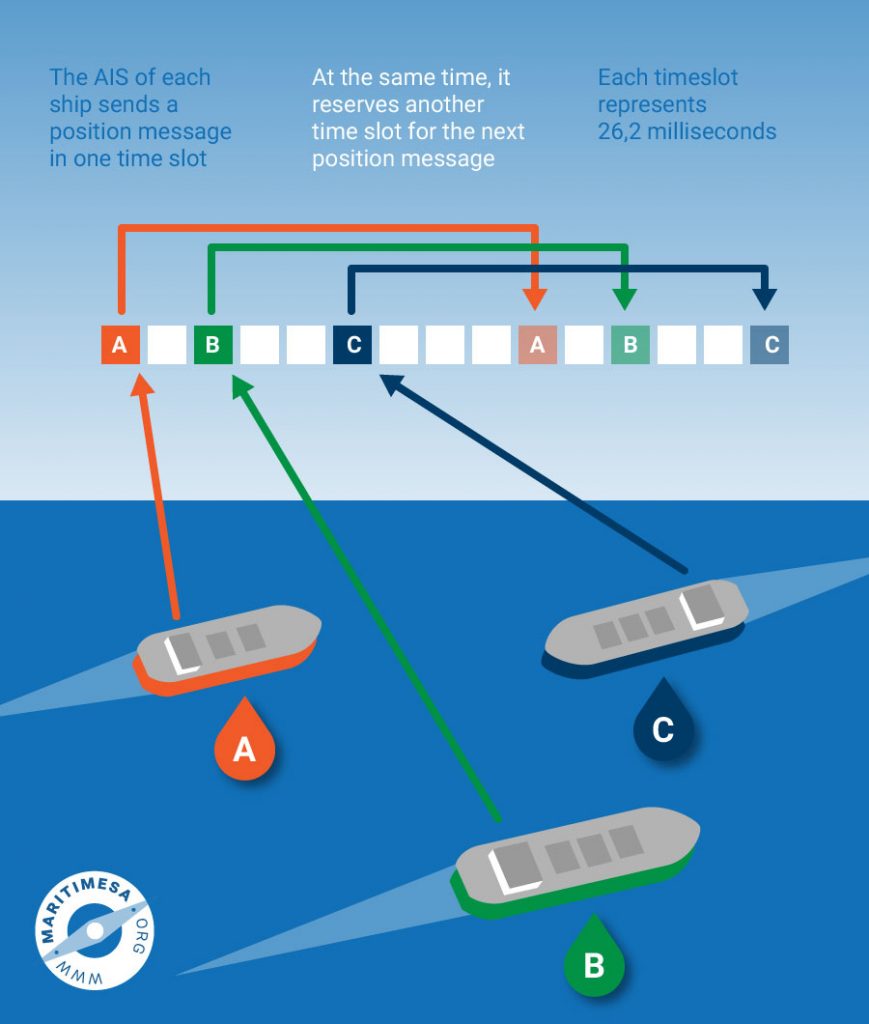In the past a ship’s identity and details had to be obtained by establishing communications with it either by flashing light or radio. As can be imagined this was time consuming and in a heavy traffic area a bit hazardous. This has now been replaced by an automated system referred to as AIS. Since December 2004 it has become mandatory for sea going vessels to have the system fitted. Besides being more convenient, the new system provides more information which enables the officer of the watch to make more informed decisions when proceeding through congested or busy seaways.
There are two types of onboard AIS:
- Class A AIS which consists of:
- one 12.5 watt VHF transceiver;
- one integral GPS receiver;
- two VHF TDMA (time division multiple access) receivers;
- one VHF DSC (digital selective calling) receiver; and
- a standard marine data interface (IEC 61162/NMEA 0183) to shipboard display and sensor systems.

Class A AIS.
- Class B AIS which consists of:
- one 2 watt VHF transmitter;
- a GPS receiver;
- two VHF receivers, one of which must be able to decode DSC transmissions as well.

Class B AIS.
Large ocean going vessels such as those subject to the SOLAS convention are obliged to use the class A system, while smaller vessels and recreational craft use class B.
How does it work?
The AIS transponder works in an autonomous and continuous mode. Although only one radio channel is necessary it transmits and receives over two radio channels to avoid interference problems and to allow channels to be shifted without communications loss from other ships. Class A AIS can tune over the whole 156.025 – 162.025 MHz band, while class B AIS is restricted to 161.5 – 162.025 MHz.
Class A stations determine their own transmission schedule, based upon data link traffic history and knowledge of future actions by other stations. Class B is a “polite” listen-before-transmitting system that will transmit on the first available slot. There are 2250 time slots established every 60 seconds and the AIS stations fit their transmissions into one of these slots during each transmission. They automatically and continuously synchronise their transmissions to avoid overlapping each other.

Diagram of the TDMA principle upon which the AIS depends. (TDMA: Time-division multiple access)
The coverage of these transmissions depends upon the height of the antenna mainly and is typical of VHF transmissions, ie 20 to 30 miles. The transmissions consists mainly of the vessel’s identity, type of vessel, its callsign, its dimensions and manoeuvring information, its cargo, its destination, its geographical position, its course and speed and its ETA at its destination. On class A ships the system is integrated with other sensor and display systems, ie radar and ECDIS and by merely clicking on a contact, all the information relating to that vessel is displayed. On class B vessels the information is displayed on an alpha numeric visual display.

Example of the information which the AIS system displays (left side of screen).


